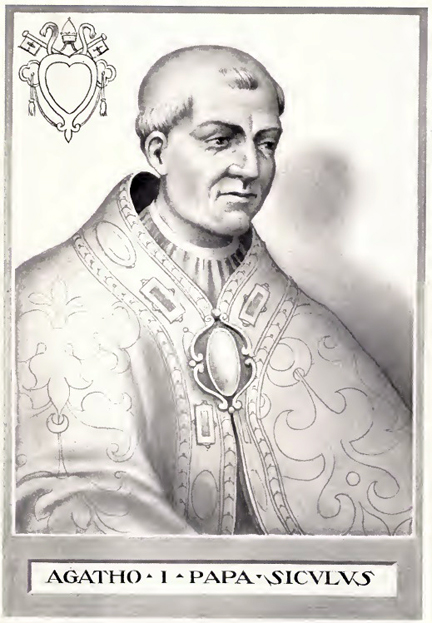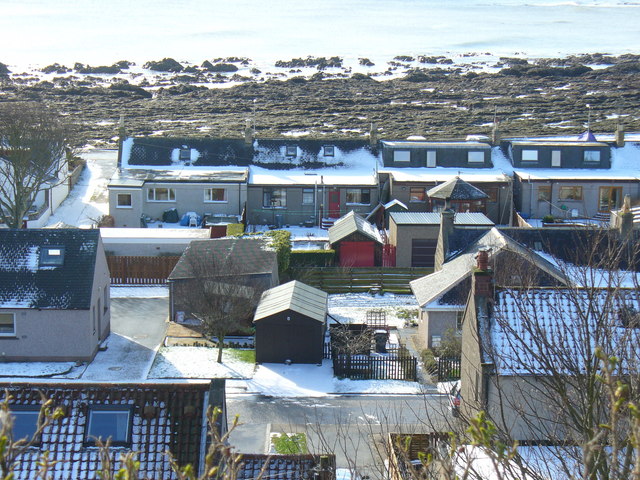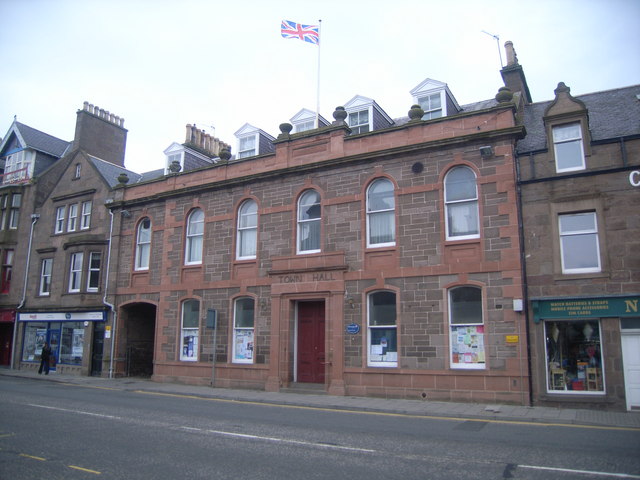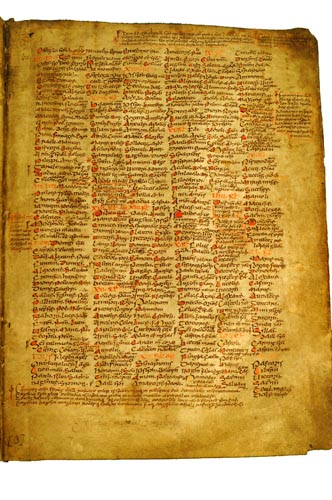|
Nathalan
Saint Nathalan (or Nachlan), (died 678) is a saint in the Roman Catholic Church, who was active in the district now known as Aberdeenshire, Scotland. Life Nathalan was born in the village of Tullich, for which he was eventually appointed as bishop. The 16th century Aberdeen Breviary portrays Nathalan as a rich nobleman who decided to cultivate the earth and devote himself to God as a hermit. The earliest church in Tullich was founded by Saint Nathalan in the 7th century. He also built churches at Bothelim and Colle. He was a nobleman who possessed a large estate, which he cultivated; he distributed his harvest generously to the poor. Nathalan is reputed to have built the first small chapel on the windswept clifftop at Cowie, Aberdeenshire, Cowie sometime during the 7th century. Legend According to legend one very rainy summer the great saint, in a moment's weakness, cursed the rain which was hindering the harvest. In penitence for his great sin in cursing God's creation, Nathal ... [...More Info...] [...Related Items...] OR: [Wikipedia] [Google] [Baidu] |
Tullich
Tullich (, ) is a village in Aberdeenshire, Scotland. It is known as the birthplace of St. Nathalan and also as the site of some noted Pictish stones. The church is the site of a ruined church, built in around 1400. It has been suggested that the medieval church was constructed on the same site as a 7th-century chapel established by Nathalan. References Further reading * Ordnance Survey Landranger Series: sheets 37 & 44 (2000) * Clan MacPhail External links Aberdeenshire Council official site: Tullich Kirkyard (2006) Villages in Aberdeenshire {{Aberdeenshire-geo-stub ... [...More Info...] [...Related Items...] OR: [Wikipedia] [Google] [Baidu] |
678 Deaths
__NOTOC__ Year 678 ( DCLXXVIII) was a common year starting on Friday of the Julian calendar. The denomination 678 for this year has been used since the early medieval period, when the Anno Domini calendar era became the prevalent method in Europe for naming years. Events By place Byzantine Empire * July 27 – The Siege of Thessalonica (676–678) ends, when the ''Sclaveni'' withdraw. * Autumn – Siege of Constantinople: Emperor Constantine IV confronts the Arab besiegers in a head-on engagement. The Byzantine fleet, equipped with Greek fire, destroys the Muslim fleet at Sillyon, ending the Arab threat to Europe, and forcing Yazid (a son of caliph Muawiyah I) to lift the siege on land and sea. The victory also frees up forces that are sent to raise the two-year siege of Thessalonica by the local Slavic tribes. Britain * King Æthelred of Mercia defeats the Northumbrian forces under King Ecgfrith, in a battle near the River Trent. Archbishop Theodor ... [...More Info...] [...Related Items...] OR: [Wikipedia] [Google] [Baidu] |
Cowie Kirk
Cowie may refer to: People *Cowie (surname) Places * Cowie, Aberdeenshire, an historic fishing village located at the north side of Stonehaven, Scotland ** Cowie Castle, a ruined castle in Aberdeenshire, Scotland ** Chapel of St. Mary and St. Nathalan (called Cowie Chapel), a ruined chapel in Aberdeenshire, Scotland ** Cowie Water, a river discharging to the North Sea at Stonehaven, Scotland *** Cowie Bridge, a roadway crossing of the Cowie Water in Stonehaven, Scotland * Cowie, Stirling, a small ex-mining village located on the outskirts of the city of Stirling, in Central Scotland *Cowie, the former name of Corio, Victoria, Australia Other uses *USS Cowie (DD-632), a destroyer *Cowie Group, a British bus and coach operator now called Arriva Arriva Ltd. is a British multinational public transport company headquartered in Sunderland, England. The company was originally established on 24 October 1938 as T Cowie Ltd. Initially focused on the sale of motorcycles, it relaunche ... [...More Info...] [...Related Items...] OR: [Wikipedia] [Google] [Baidu] |
Cowie, Aberdeenshire
Cowie is an historic fishing village in Kincardineshire, Scotland. This village has existed since the Middle Ages, but in current times it is effectively subsumed into the town of Stonehaven. It had an estimated population of in . History William Camden recorded the existence of Cowie in 1596 in his historical writings. (Watt, 1985) Notable historic features in the vicinity include Cowie Castle (now ruined), Chapel of St. Mary and St. Nathalan (now ruined), the Stonehaven Tolbooth, Muchalls Castle and Fetteresso Castle. Cowie Village was situated at the southern end of the ancient Causey Mounth trackway, which road was constructed on high ground to make passable this only available medieval route from coastal points south from Stonehaven to Aberdeen. This ancient passage specifically connected the River Dee crossing (where the present Bridge of Dee is situated) via Portlethen Moss, Muchalls Castle and Cowie Castle to the south. (Hogan, 2007) The route was that taken ... [...More Info...] [...Related Items...] OR: [Wikipedia] [Google] [Baidu] |
Stonehaven
Stonehaven ( ) is a town on the northeast coast of Scotland, south of Aberdeen. It had a population of 11,177 at th2022 Census Stonehaven was formerly the county town of Kincardineshire, succeeding the now abandoned town of Kincardine, Aberdeenshire, Kincardine. It is currently administered as part of Aberdeenshire. The town is known in the local Doric Scots, Doric dialect as ''Steenhive'' () and is nicknamed ''Stoney''. Pre-history and archaeology Stonehaven is the site of prehistoric events evidenced by finds at Fetteresso Castle and Neolithic pottery excavations from the Spurryhillock area. In 2004, archaeological work by CFA Archaeology, in advance of the building of the Aberdeen to Lochside Natural Gas Pipeline, found two short Cist, cists burials containing cremated remains to the southwest of Stonehaven. Radiocarbon dating put the burials in the first half of the 2nd millennium BC, which was the Early Bronze Age in Scotland. The burials contained stone tool artifacts ... [...More Info...] [...Related Items...] OR: [Wikipedia] [Google] [Baidu] |
Canonizations By Pope Leo XIII
In various religions, a saint is a revered person who has achieved an eminent status of holiness, known as sainthood. The word ''saint'' comes from the Latin word , meaning , and although ''saint'' has been applied in other religious contexts, the word has its origins in Christianity. In Christianity, some religious authorities require that a person undergo a formal process of canonization to be recognized as a saint, such as the Catholic and Eastern Orthodox Churches. These churches also hold that a saint may intercede on behalf of the living who invoke them in prayer, a belief which is rejected by Protestants. Outside Christianity, the word ''saint'' has been extended to include revered figures in Buddhism, Chinese folk religion, Greek polytheism, Hinduism, Islam, Jainism, Judaism, Shinto, and Zoroastrianism. Christianity Interdenominational * Child * Early Christian * Military * Royal * By patronage ** Ailments, illness, and dangers ** Ethnic groups ** Occupation and ... [...More Info...] [...Related Items...] OR: [Wikipedia] [Google] [Baidu] |
Medieval Scottish Saints
In the history of Europe, the Middle Ages or medieval period lasted approximately from the 5th to the late 15th centuries, similarly to the post-classical period of World history (field), global history. It began with the fall of the Western Roman Empire and transitioned into the Renaissance and the Age of Discovery. The Middle Ages is the middle period of the three traditional divisions of Western history: classical antiquity, the medieval period, and the modern period. The medieval period is itself subdivided into the Early Middle Ages, Early, High Middle Ages, High, and Late Middle Ages. Population decline, counterurbanisation, the collapse of centralised authority, invasions, and mass migrations of tribes, which had begun in late antiquity, continued into the Early Middle Ages. The large-scale movements of the Migration Period, including various Germanic peoples, formed new kingdoms in what remained of the Western Roman Empire. In the 7th century, North Africa and the ... [...More Info...] [...Related Items...] OR: [Wikipedia] [Google] [Baidu] |
7th-century Christian Saints
The 7th century is the period from 601 through 700 in accordance with the Julian calendar in the Christian Era. The spread of Islam and the Muslim conquests began with the unification of Arabia by the Islamic prophet Muhammad starting in 622. After Muhammad's death in 632, Islam expanded beyond the Arabian Peninsula under the Rashidun Caliphate (632–661) and the Umayyad Caliphate (661–750). The Muslim conquest of Persia in the 7th century led to the downfall of the Sasanian Empire. Also conquered during the 7th century were Syria, Palestine, Armenia, Egypt, and North Africa. The Byzantine Empire suffered setbacks during the rapid expansion of the Caliphate and a mass incursion of Slavs in the Balkans which reduced its territorial limits. The decisive victory at the Siege of Constantinople in the 670s led the empire to retain Asia Minor, which ensured the existence of the empire. In the Iberian Peninsula, the 7th century was known as the ''Siglo de Concilios'' (century o ... [...More Info...] [...Related Items...] OR: [Wikipedia] [Google] [Baidu] |
People From Marr, Scotland
The term "the people" refers to the public or common mass of people of a polity. As such it is a concept of human rights law, international law as well as constitutional law, particularly used for claims of popular sovereignty. In contrast, a people is any plurality of persons considered as a whole. Used in politics and law, the term "a people" refers to the collective or community of an ethnic group or nation. Concepts Legal Chapter One, Article One of the Charter of the United Nations states that "peoples" have the right to self-determination. Though the mere status as peoples and the right to self-determination, as for example in the case of Indigenous peoples (''peoples'', as in all groups of indigenous people, not merely all indigenous persons as in ''indigenous people''), does not automatically provide for independent sovereignty and therefore secession. Indeed, judge Ivor Jennings identified the inherent problems in the right of "peoples" to self-determination, as i ... [...More Info...] [...Related Items...] OR: [Wikipedia] [Google] [Baidu] |
History Of Aberdeenshire
History is the systematic study of the past, focusing primarily on the human past. As an academic discipline, it analyses and interprets evidence to construct narratives about what happened and explain why it happened. Some theorists categorize history as a social science, while others see it as part of the humanities or consider it a hybrid discipline. Similar debates surround the purpose of history—for example, whether its main aim is theoretical, to uncover the truth, or practical, to learn lessons from the past. In a more general sense, the term ''history'' refers not to an academic field but to the past itself, times in the past, or to individual texts about the past. Historical research relies on primary and secondary sources to reconstruct past events and validate interpretations. Source criticism is used to evaluate these sources, assessing their authenticity, content, and reliability. Historians strive to integrate the perspectives of several sources to devel ... [...More Info...] [...Related Items...] OR: [Wikipedia] [Google] [Baidu] |
Chapel Of St
A chapel (from , a diminutive of ''cappa'', meaning "little cape") is a Christian place of prayer and worship that is usually relatively small. The term has several meanings. First, smaller spaces inside a church that have their own altar are often called chapels; the Lady chapel is a common type of these. Second, a chapel is a place of worship, sometimes interfaith, that is part of a building, complex, or vessel with some other main purpose, such as a school, college, hospital, palace or large aristocratic house, castle, barracks, prison, funeral home, hotel, airport, or military or commercial ship. Third, chapels are small places of worship, built as satellite sites by a church or monastery, for example in remote areas; these are often called a chapel of ease. A feature of all these types is that often no clergy are permanently resident or specifically attached to the chapel. For historical reasons, ''chapel'' is also often the term used by independent or nonconformist den ... [...More Info...] [...Related Items...] OR: [Wikipedia] [Google] [Baidu] |
Roman Catholic Church
The Catholic Church (), also known as the Roman Catholic Church, is the List of Christian denominations by number of members, largest Christian church, with 1.27 to 1.41 billion baptized Catholics Catholic Church by country, worldwide as of 2025. It is among the world's oldest and largest international institutions and has played a prominent role in the history and development of Western civilization.Gerald O'Collins, O'Collins, p. v (preface). The church consists of 24 Catholic particular churches and liturgical rites#Churches, ''sui iuris'' (autonomous) churches, including the Latin Church and 23 Eastern Catholic Churches, which comprise almost 3,500 dioceses and Eparchy, eparchies List of Catholic dioceses (structured view), around the world, each overseen by one or more Bishops in the Catholic Church, bishops. The pope, who is the bishop of Rome, is the Papal supremacy, chief pastor of the church. The core beliefs of Catholicism are found in the Nicene Creed. The ... [...More Info...] [...Related Items...] OR: [Wikipedia] [Google] [Baidu] |






